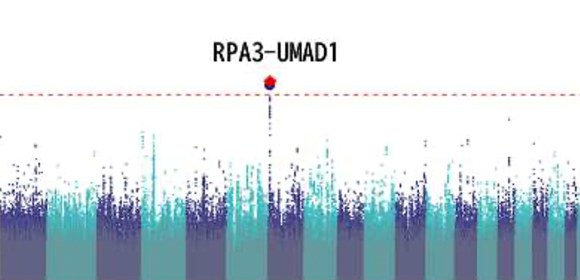
Change isn’t a good thing for Japanese rheumatoid arthritis patients
Researchers led by Osaka University find that some Japanese rheumatoid arthritis patients are genetically predisposed to interstitial lung disease
In many cases, a complex interplay between our genes and the environment governs whether or not we will develop a certain disease. Interestingly though, researchers are discovering that the genetic component of disease predisposition may depend on our ethnic background.
In a study published recently in Annals of the Rheumatic Diseases, a team of researchers led by Osaka University identified a genetic variant in the Japanese population that increases the likelihood of interstitial lung disease (ILD) among rheumatoid arthritis (RA) patients.
RA is an inflammatory autoimmune disease that primarily affects the joints but can also damage the heart, eyes, lungs, skin, and vascular system. ILD, a group of conditions characterized by fibrosis, or scarring, of the lung tissue, is one of the most common complications of RA and carries with it a significantly higher risk of death than uncomplicated RA.
“Previous studies have linked several genetic variants with an increased risk of ILD-complicated RA, but these risk variants do not hold for non-European populations,” explains study lead author Yuya Shirai. “We therefore screened the genomes of almost 5,000 Japanese RA patients with and without ILD in search of novel genetic variants associated with ILD-complicated RA in the Japanese population.”
Small variations in the sequence of a gene, often even a single nucleotide, can result in subtle changes in function. Using an approach called a genome-wide association study, the researchers found a variation at a single genetic locus on chromosome 7 that was more common among Japanese RA patients with ILD than those without.
“The genetic variant was also strongly associated with chest CT image patterns indicative of lung fibrosis and conferred a slightly increased risk of ILD in non-RA individuals,” says Shirai.
More in-depth analysis revealed that the risk variant was located within a gene called RPA3 , which previous studies have shown is essential for the cellular response to DNA damage and the regulation of telomeres, the regions at the ends of chromosomes that protect against degradation. One of the most common outcomes of telomere dysfunction is lung fibrosis.
“Based on our findings, we predict that the identified variant increases the risk of RA with ILD by altering the expression of RPA3 , triggering fibrosis of the lung tissue,” explains corresponding author Yukinori Okada. “Our study helps unravel the complicated etiology of RA, particularly among non-European patients, and may help further the development of personalized medicine for RA patients.”

Figure 1: A novel genetic locus related to interstitial lung disease was identified following genomic analysis of 5,000 rheumatoid arthritis patients.

Figure 2: Odds ratios and 95% confidence intervals for the novel genetic polymorphism, which were classified based on the cohorts (left) and the chest CT image patterns (right). The vertical dotted line indicates an odds ratio of 1, while the size of each diamond reflects the sample size for each individual category. The further the diamond is positioned to the right, the greater the likelihood of interstitial lung disease.
The article, “Association of the RPA3-UMAD1 locus with interstitial lung diseases complicated with rheumatoid arthritis in Japanese,” was published in Annals of the Rheumatic Diseases at DOI: https://doi.org/10.1136/annrheumdis-2020-217256 .
Related links
